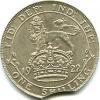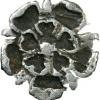Pre the 1816 coinage, groats et infra were almost certainly struck on an as required basis with no consideration for the Maundy distribution. Although money was dispensed at the ceremony, it must have been taken from existing currency supplies. One would assume that the poor weren't particularly concerned what condition the coins were in, nor whether their date was current. In my opinion, the concept of Maundy Sets dated prior to the 19th century is something that has been retrospectively applied to those years where all denominations were struck, rather than as a result of a conscious decision to produce sets for the ceremony. With the introduction of Boulton and Watt's presses used for the recoinage of 1816, it enabled the mint to strike a consistent product, and it is this that I think led to the production of yearly sets, though obviously the priority was the production of regular silver currency pieces following 60 years of neglect throughout the reign of George III. Although there are a couple of gaps in the first years of the new coinage, since 1822 Maundy coins have been produced every year since. The number of individuals collecting has also increased progressively down the years, possibly as a result of wealth trickling down from the spoils of the industrial revolution and so we also see sets being made for collectors, in addition to those needed for the Maundy ceremony. This was the norm until 1908 when you could order them from the mint just as you can buy their 'collectable' items today, but from 1909 onwards the sets were essentially made for the Maundy distribution. 1762 is clearly a year where they only needed threepences, but it could just as easily have been any of the other denominations.
 Coinpublications.com
Coinpublications.com



